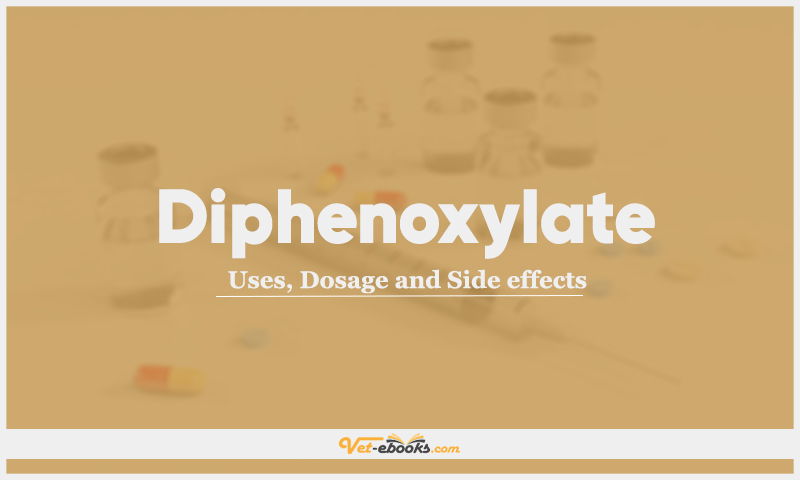Diphenoxylate: Uses, Dosage and Side Effects

Overview
- An opioid that increases the tone of intestinal segmental smooth muscle, decreases the propulsive activity of smooth muscle and reduces electrolyte and water secretion into the intestinal lumen.
- To prevent diphenoxylate overdose abuse, atropine is administered in a subtherapeutic dose.
Uses of Diphenoxylate
- Canine acute diarrhea and irritable bowel syndrome treatment.
- Concurrent correction of the water and electrolyte imbalance is recommended while the cause of the diarrhea is investigated.
- Chronic cough treatment owing to its antitussive properties.
Dose of Diphenoxylate in Dogs and Cats
Dogs:
- Antidiarrhoeal: 0.05–0.1 mg/kg diphenoxylate p.o. q6–8h.
- Antitussive: 0.2–0.4 mg/kg diphenoxylate p.o. q8–12h.
Cats:
No information is available.
Drug Dosage Calculator
You Should Give:
Side Effects of Diphenoxylate in Dogs and Cats
- Constipation, sedation, and ileus.
- Do not administer to animals suffering from liver disease, intestinal obstruction, or malignant or toxic bowel disease.
- Little is known about the safety and efficacy of diphenoxylate in cats; there may be undesirable behavioral effects (excitement).
Contraindications of Diphenoxylate in Dogs and Cats
- Intestinal obstruction
Some Notes:
Diphenoxylate may potentiate the sedative effects of barbiturates and other tranquilizers.
Tip
Do You Want To Increase Your Veterinary Knowledge and Practical Skills?
You Can Now Browse and Download +3000 Books For Veterinary Professionals & Students Online.
Download Veterinary Books




















